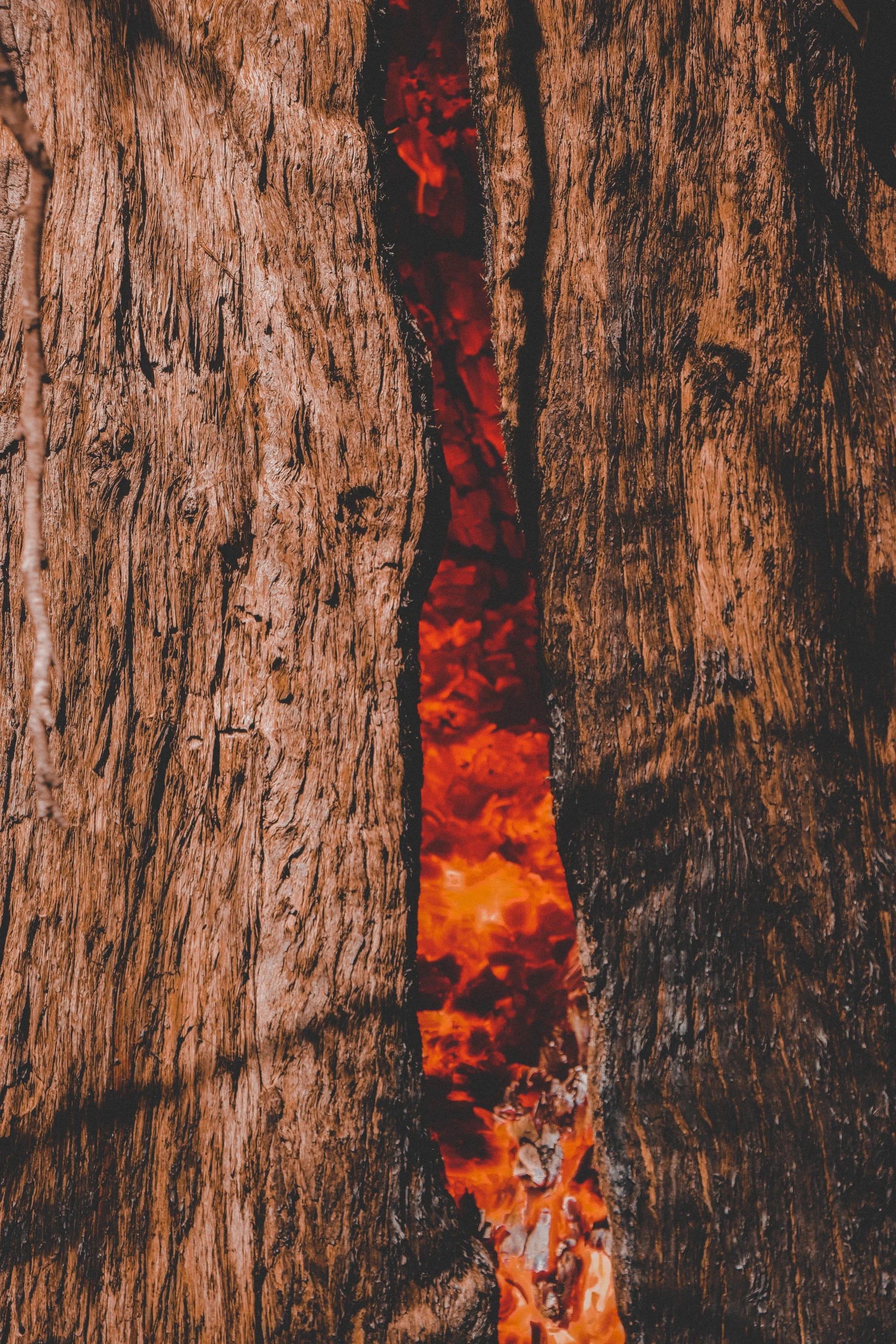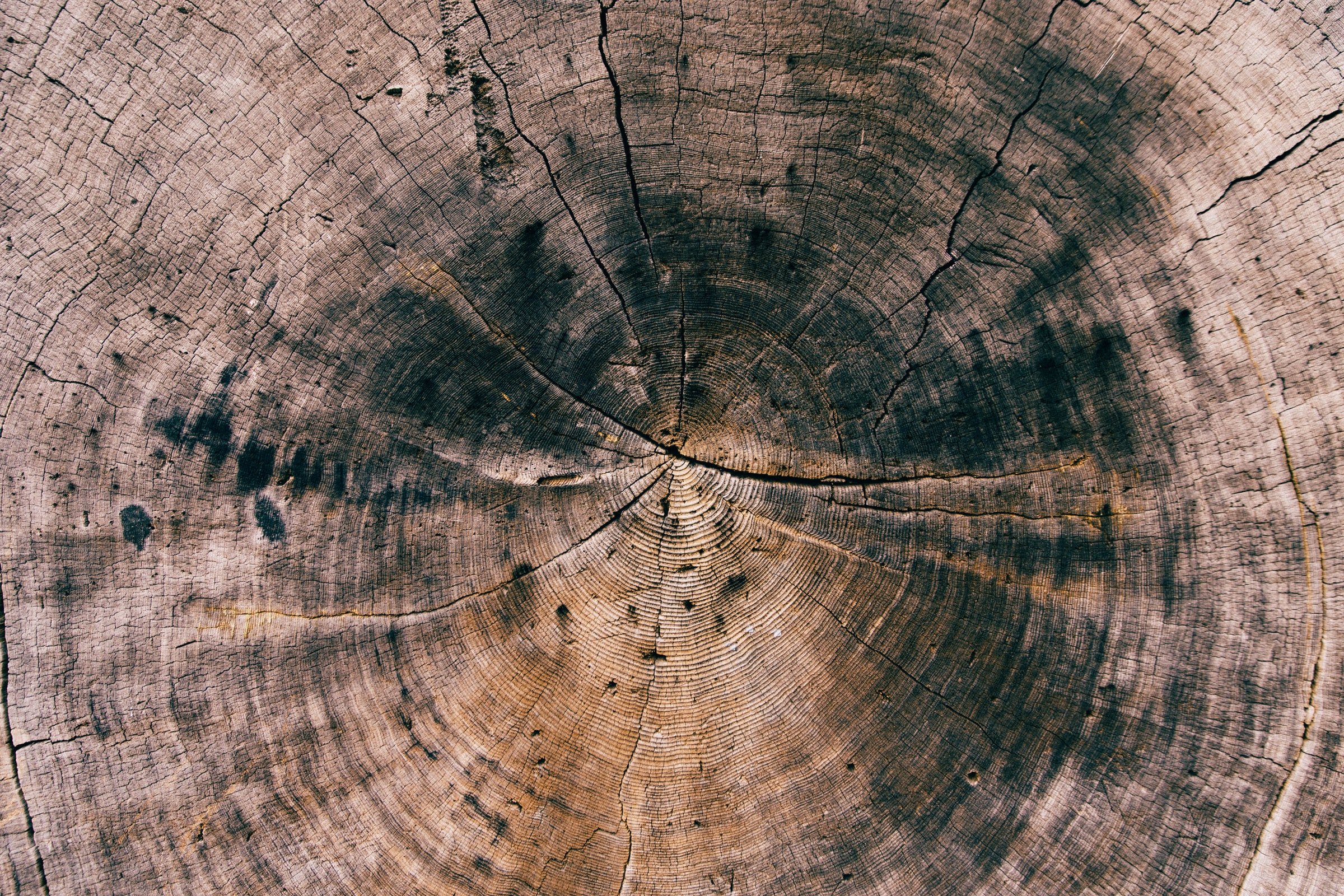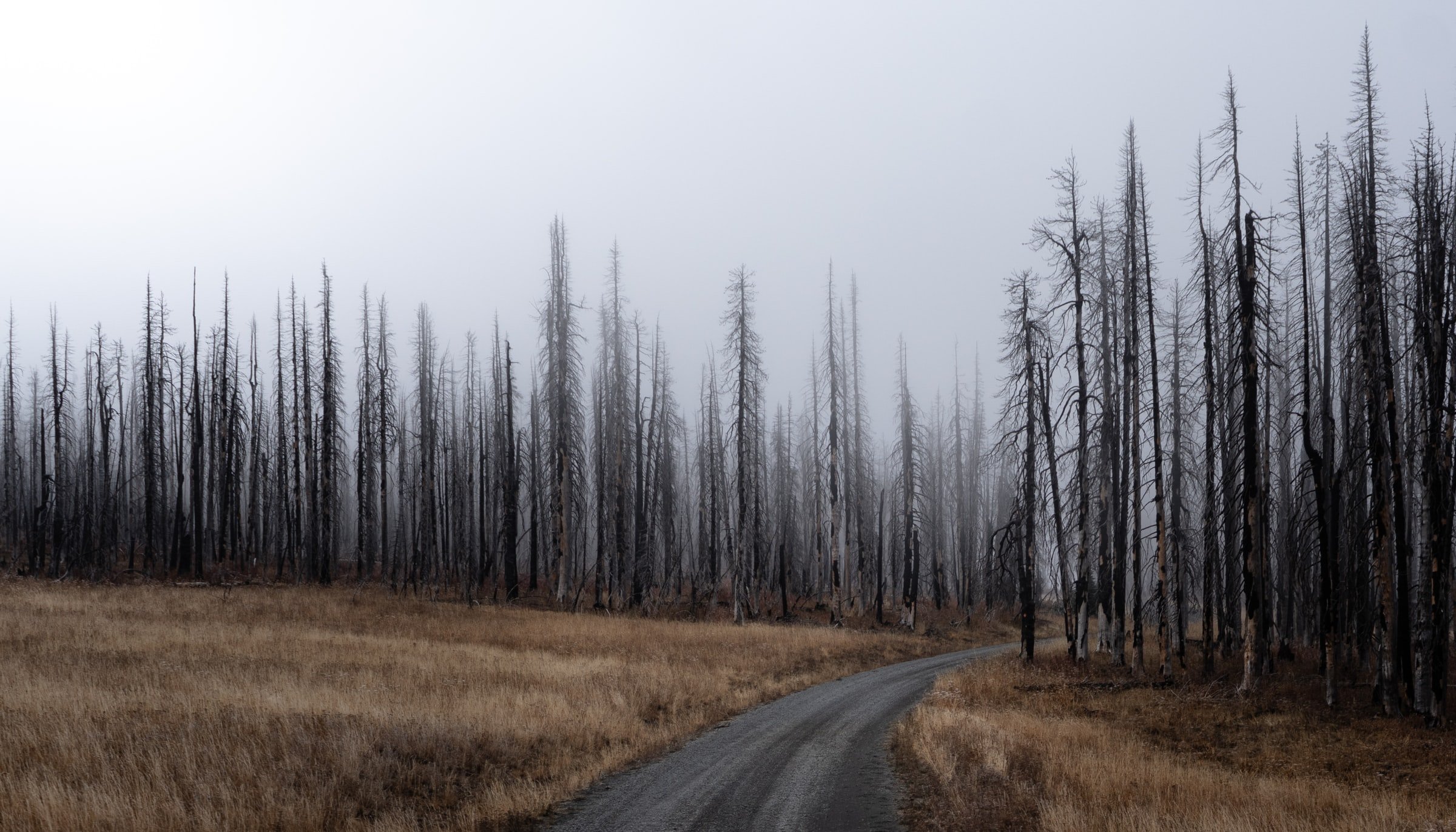An interview with dendrochronologist and fire historian Tom Swetnam
December 4th 2021. Melissa SterryAn emeritus professor and former director of the Laboratory of Tree-Ring Research, University of Arizona, Tom Swetnam has studied fire, climate, and human history of forests across western North America, southern South America and central Siberia. He uses tree rings, fire scars, documentary history, and archaeology to reconstruct spatial and temporal patterns of fires and learn how climate and people shaped these patterns over past centuries. Here Tom discusses how denchronology can shed light on our possible fire futures…
MS: Having studied the relationship between humanity and wildfire at both the local and global scale and across millennia, what have you found to be the most concerning trends of the Industrial age?
TS: As a scientist who studies trees, and as a person who simply loves trees, I am deeply concerned about increasing tree mortality around the planet, especially ancient ones. This trend, due largely to climate change, is well-documented now. What is especially concerning is that the mortality is disproportionately the oldest and largest trees. The causes related to warming are drought stress, bark beetle attacks, and wildfires, among others. Just in the past two years we have lost 15 to 20 percent of the largest and oldest giant sequoias due to high severity wildfires.
MS: Indigenous societies dating all the way back to the Bronze age and likely before found ingenious ways to live with wildfire. Having studied fire cultures in indigenous communities, which do you think have most relevance to non-indigenous communities living at the wildland-urban-interface and why?
TS: Our recent studies of fire and people have centred in the Jemez Mountains of New Mexico, where the Hemish (Jemez) people lived for centuries within ponderosa pine forests. Before the Spanish arrival in the late 1500s, the Hemish population density in these forests was equivalent to today’s definition of the “wildland urban interface” (WUI). Then, by the mid-1600s, disease and warfare killed off 80-90% of the people. The survivors were forcibly resettled down in lowlands, far from the forests. From study of tree rings, charcoal in soils, archaeology, and interviews with elders, we learned that fire was ubiquitous during the centuries of people living within forests. However, the fires were small in extent, and of low intensity. There is no evidence of extensive, high severity fires sweeping through forests and burning down villages. Then, over succeeding centuries many low severity fires burned freely and widely, until about 1900, when huge numbers of sheep were brought in. The grazing, and then active fire suppression by government agencies stopped the widespread burning. Now, 120+ years later, high severity fires are burning across these same ponderosa pine landscapes where Hemish people once lived sustainably for centuries. The causes are a combination of: 1) lack of low severity surface fire, 2) extensive logging followed by massive in-growth of dense stands of small diameter, stunted trees, 3) accumulated dead fuels, and 4) increasing warming and drought.
So, what are the relevant lessons for today? First and foremost, it is possible for significant numbers of people to live within ponderosa pine forests without risks of high severity fire. The key is living with fire. That is, allowing lightning set fires to burn in places, and by setting fires frequently and judiciously to burn accumulation of fine fuels, to clear brush and thin dense stands of regenerating trees, to promote desired plants and animals, etc. Also, utilisation of small diameter trees for building and for firewood helps maintain open forests, low connectivity of fuels, and reduced risks of high severity fire. All of these practices are possible to replicate today, even in the face of global warming. But it will require a very different mindset about fire and smoke than currently exists among most homeowners now living in the modern WUI.
MS: ‘Life finds a way’, as a certain fictional Chaos Theory expert once said. Life having found many ways to coexist with wildfire, of the pyrophyte species you’ve studied, which have inspired you most and why?
TS: I’m a dendrochronologist, so of course, trees inspire me! There are three species that are most awesome to me: First, there is ponderosa pine. It is a sentimental favourite, in part because I grew up in forests of these trees in northern New Mexico, and that is where I now live in retirement. In addition to being beautiful in form, colour, and even in smell(!), it is a fire-loving tree that also keeps faithful track of a lifetime of fires in its annual rings. I am speaking of the fire scars that form on the lower boles of many trees, from which we can recover a chronology of the years and seasons when fires burned the understory of these forests. Ponderosa is a champion among trees in recording past, frequent fires. One tree we studied had 42 fires recorded as scars over a three-century lifespan. That included long periods with fires occurring every-other year, and one instance of fires occurring on consecutive years…at the base of one tree!
Another species that is truly amazing to me is the Bigcone Douglas-fir. This is a close relative of the ordinary Douglas-fir which is widespread in western North America. Bigcone is found only in small, isolated stands on steep slopes in the coastal ranges of California. It grows in special refugial “islands” of the landscape within a “sea” of highly flammable chaparral. High severity fires sweep through the chaparral every 30 to 60 years or so, and also through the islands of Bigcone. Their crowns are scorched off, but then in subsequent years new branches and branchlets resprout from the mainstem and larger branches. They have very thick bark, so open basal fire scars are uncommon, but still there are old wounds deeply buried in their stems. From these scars in Bigcone survivors we can read the chronology of fires in adjoining chaparral over the past four centuries. This magnificent tree is surely one of the most fire-resistant and fire-adapted conifers in the world.
Last, there is the giant sequoia. Walking in these groves is like visiting a natural cathedral, and the feeling is one of awe, with a sense you are surrounded by ancient beings. For a dendrochronologist it is heaven! We were so fortunate to have an opportunity to take tree-ring samples from stumps, logs, and snags in six different groves along the west slopes of the Sierra Nevada. We developed three thousand years of fire and climate history from massive table-sized slabs of wood we brought back to our laboratory in Tucson, Arizona. Like ponderosa pine, sequoias are surface fire-loving trees, and they are superbly adapted to surviving very frequent fires while also recording the timing of those fires in their rings. In addition to insights about the close coupling of climate and fire, there are hints of the human role in adding fire to sequoia groves. Also, sequoia wood itself is gorgeous and inspiring to look at.
MS: Dendrochronology plays a profoundly important role in our capacity to understand past climates, solar storms, fire regimes, and more, and in the process, understand possible future climates, fire regimes, and other hazard events. How has this science evolved over the past several years, and how do you see it evolving in the coming years and decades?
TS: Dendrochronology was first used more than a century ago in archaeological and climate studies. In recent decades it has greatly expanded in ecological applications. To me, the most interesting development in dendrochronology lately has been the multi-disciplinary use of tree-rings, along with other sources of data and information, to study human-environment interactions over centuries and millennia. Tree rings are very useful for these studies because they can provide exactly dated chronologies of climate, fire, and human activities (such as construction dates of dwellings) all from the same landscapes. The cross-comparison of multiple, well-dated chronologies over landscapes and regions reveals the interacting effects of both people and climate on ecosystem processes.
Another great thing about tree rings is that they are a natural “archive” of cultural and natural history that remains preserved in the wood. And that wood can be collected (and needs to be soon!) and kept for later study with new tools and new questions. So, for example, tree-ring collections such as the massive one at our laboratory in Tucson, can be viewed as a library, and in that library are many books with most pages still unread. Someday a new tool, measurement, or observation of a newly discovered feature recorded in tree rings will be used to read more pages. Just one example of this type of discovery and new use of tree-ring archives is the signal of major solar events (e.g., 774-775 CE) that is recorded in tree rings as a spike in the carbon-14 isotope in that year. New kinds of chronologies of events and processes (history) will derive from these discoveries that will change how we understand our solar system, planet, and ourselves.
MS: What are the primary limitations of dendroclimatology. For example, does a tree ring need to be in its biological state (i.e. a recent specimen of an extant species), or can it be mineralised (i.e. a section of a fossilised extinct species) to be useful in some dendroclimatological studies?
TS: There are a few examples of using dendrochronology on fossilised (petrified) wood. Of course, the method is most useful when you have many trees living at the same time because developing chronologies of ring widths or fire scars requires matching patterns between trees. This is called “crossdating”.
The main limitation of dendrochronology is that the trees must form annual rings, meaning they have seasonal growth and a dormancy period. This creates a distinct ring. Unfortunately, many tropical trees grow more-or-less year-round, and so don’t form clearly discernible annual rings.
MS: Of the many pyrophytic plants, which do you think are the most likely to persist and why, and vice versa, which, if any, do you think less likely to persist?
TS: It’s a good time to be a grass or a shrub. We are surely facing a lot more fire in coming decades due to the drying effects of warming. Many of these fires will be too hot or will recur too frequently to allow trees to persist in places that were once forests. We are already seeing signs of “type-conversion” of forests to grasslands/shrublands in different places around the world. Pyrophytic, invasive species are abetting these conversions in some places. So, species that will benefit are those well adapted to high severity fires, i.e., fires that kill most or all above ground parts. Hence, the winners will be re-sprouting species, prolific seed producers, and producers of fire-surviving, widely dispersing seeds. Still, the example of Bigcone Douglas-fir offers hope that some refugial, fire-adapted trees will hang on in pockets.
MS: What’s the most unexpected tenet of wildfire behaviour that you’ve come across in your research and how did it influence your thinking on the subject?
TS: One of the most fascinating wildfire behaviours we have seen in some recent megafires are the formation of large-scale vortices. These giant horizontal and vertical whirlwinds, sometimes encompassing broad swaths of fire fronts extending over miles, have been described from the field since at least the 1970s. They seem to be occurring more frequently now, and there is much more research focus on them. Because these vortices are associated with rapid and erratic rates of spread and high intensity, they are important to study and better understand.
These wind-driven fire behaviours have interesting effects on forests, including leaving behind surviving strips of trees, called “tree streets”, in some cases. This has me thinking about the legacies of these extreme wildfire patterns in extant forest structure.
MS: The year is 2030, describe the worst-case wildfire scenario you see?
TS: Climate change, wildfires, and tree death continues apace and even increases. Much of the forested areas of the planet are converted (or are converting to) shrublands and grasslands. Mass human fatality events due to fires burning through ex-urban landscapes (e.g., Paradise, CA, from the Camp Fire in 2018) occur with increasing frequency.
MS: The year is 2030, describe the best-case wildfire scenario you see?
TS: The frequency and magnitude of wildfire losses of forests and human communities and lives has decreased, or at least the trend is not rising. If this occurs, I suspect it will be because either: 1) very pro-active, extensive wildfire risk reduction efforts are undertaken (e.g., use of forest thinning, prescribed fire, firewise home and structure hardening, etc.), or 2) natural variability attenuates the warming that is already mostly locked in due to current greenhouse gas levels. Alas, 2) is definitely wishful thinking, and 1) may be.
MS: Where can readers find out more about your recent works?
TS: On our studies in the Jemez Mountains, NM, fire, people and climate:
https://www.pnas.org/content/pnas/113/6/E696.full.pdf
https://www.pnas.org/content/pnas/118/4/e2018733118.full.pdf
https://royalsocietypublishing.org/doi/pdf/10.1098/rstb.2015.0168
https://eos.org/features/fire-as-medicine-learning-from-native-american-fire-stewardship
https://www.archaeologysouthwest.org/product/asw30-4/
On our giant sequoia fire history studies:
https://fireecology.springeropen.com/articles/10.4996/fireecology.0503120
On Bigcone Douglas fir fire history:
https://fireecology.springeropen.com/articles/10.4996/fireecology.0503035
On high severity fire and forest type conversion:
https://www.nytimes.com/2015/09/22/science/as-fires-grow-a-new-landscape-appears-in-the-west.html
On the Laboratory of Tree-Ring Research, and value of tree-ring archives:
https://eos.org/features/cores-3-0-future-proofing-earth-sciences-historical-records
Find out more about Tom’s work here and more about the Laboratory of Tree-Ring Research, University of Arizona here.
Images : [Top] Fire burning inside a tree hollow by Jacob Spencer [Middle] Tree ring by Patrick Fore [Bottom] Forest post-fire by Chad Peltola. All published under UnSplash License.


